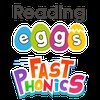In response to this data and other literacy concerns, there’s a growing movement to use research-based methods to improve literacy learning.
New Zealand is committed to teaching and learning underpinned by the science of learning, and this is evident in the refreshed Te Mātaiaho | The New Zealand English Curriculum Years 0–6, set to roll out in 2025.
For reading in Phase 1 this includes systematic, explicit instruction to develop foundational reading skills and empower students to love reading.
As with any new curriculum, teachers face the challenge of navigating the changes and adapting their practices to meet new expectations.
But while the task may seem daunting, it’s also an opportunity to enrich the literacy learning experience for students. In this piece, we’ll address the upcoming changes with practical tips and recommendations.
What is explicit teaching and why it’s at the core of the refreshed Te Mātaiaho | The New Zealand English Curriculum
Te Mātaiaho | The New Zealand English Curriculum Years 0–6 emphasises the current research and evidence on how students learn and which teaching strategies are the most effective.
At the centre of the model is explicit teaching, where new concepts, skills or knowledge are explained clearly and directly.
Skills are taught in a logical sequence, with each lesson building on prior knowledge and reinforcing concepts through repeated practice. Opportunities to review learning are woven throughout each lesson, using interleaved practice and end-of-lesson quizzes.
Research shows that this kind of explicit teaching is highly effective in helping all students, especially struggling readers, achieve reading success.
Breaking down Systematic Synthetic Phonics: Everything you need to know
With the new curriculum, the Ministry of Education is focused on evidence-based practice and recommends explicit and systematic instruction.
In teaching reading, the research supports systematic synthetic phonics programmes based on decades of research in Australia, Great Britain and the United States.
To help students become strong and independent readers, a systematic synthetic phonics programme must have a carefully mapped scope and sequence.
The systematic sequence must be explicit and logical, starting with simple and progressing to more complex phonics knowledge and skills.
The synthetic part means children are taught to "synthesise," or blend, individual sounds (phonemes) to form words.
In practice, systematic synthetic phonics means that students start with learning letter sounds and blending them into words. They are also taught to break down words and spell them, linking reading and writing. Decodable texts reinforce the letter-sound combinations, helping practise these skills. This approach builds fluency and confidence, enabling students to read words quickly and accurately.
Unlocking literacy success: How Reading Eggs with its Fast Phonics programme supports New Zealand teachers in implementing Structured Literacy
Fast Phonics is a systematic synthetic phonics programme included in the comprehensive Reading Eggs subscription.
Like all Reading Eggs programmes, it is aligned with the principles of the science of learning and anchored in the five pillars of reading success: phonemic awareness, phonics, fluency, comprehension and vocabulary.
Fast Phonics contains 20 peaks and supports a structured literacy approach to build foundational reading skills. Each Lesson Peak also includes practice in extended reading of decodable texts.
The programme focuses on phonemic awareness and phonics, enabling students to master the essential skills of blending and segmenting sounds through:
- Explicit instruction followed by scaffolded activities, independent practice and instant feedback to consolidate learning and build automaticity.
- A systematic scope and sequence designed to be cumulative, providing spaced practice and effectively enabling skill building.
- Phonological awareness and phonics to teach students to spell. The process begins with splitting words into syllables and phonemes, followed by matching those sounds to letters. These spelling elements focus on phonology. By teaching words that follow the same rules taught for reading (the letter c makes a /k/ sound), students are strengthening their cognitive pathways to understand these letter-sound correspondences.
- Oral language, vocabulary, reading fluency and comprehension integrated into the peaks.
- Teacher-developed ready-to-use resources with weekly teaching guides, sound maps, sound cards, tricky words instruction and hundreds of phonetically decodable books
A bonus tip for busy teachers: Save time with Fast Phonics’ weekly planners
Speaking of resources, Fast Phonics’ weekly planners offer step-by-step guides that take the stress out of lesson planning and help keep students on track.
Divided into individual days, the weekly teaching guides set out:
✓ week-by-week, day-by-day teaching and learning following the Fast Phonics programme
✓ learning objectives
✓ revised and taught letter-sounds (Grapheme-Phoneme-Correspondences, GPCs)
✓ high frequency words and decodable words
✓ tricky words (and how to teach them)
✓ online videos and activities
✓ additional instructional support
✓ alternative spellings and pronunciations relevant decodable books and fluency reading recording sheets
✓ worksheets and assessments.
Ready to see the impact of explicit teaching and structured literacy in your classroom?
Fast Phonics, a phonics component of the comprehensive Reading Eggs suite, is designed to seamlessly integrate with your existing classroom strategies, enhancing students’ phonics knowledge while aligning with the new curriculum’s focus on structured literacy.
Through explicit, structured teaching, our programme supports your classroom’s approach to literacy, creating a clear path to reading success for every student.
Unlock your free 30-day trial and experience the difference!
















